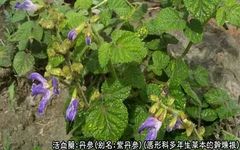Disease inquiry, health guidance, classic wellness, traditional Chinese medicine and herbs, no need to seek help when ill
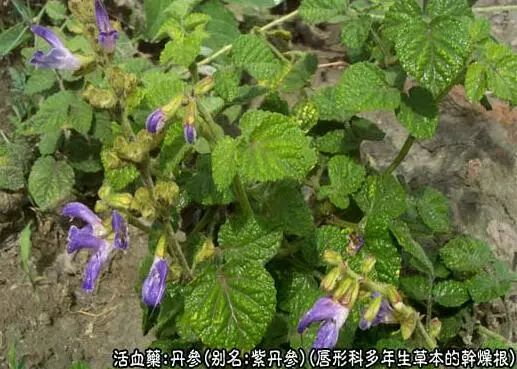
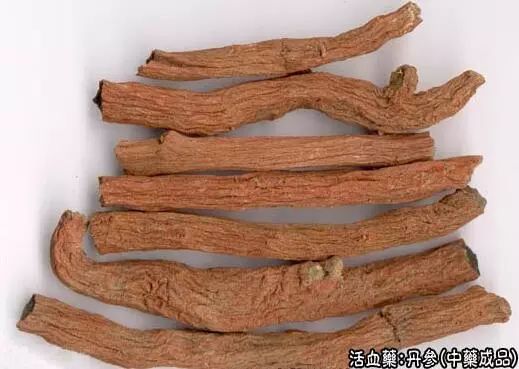
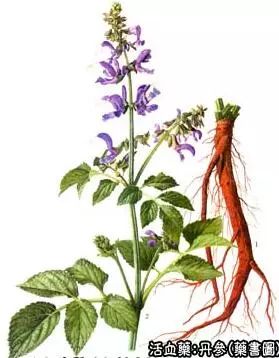
This herb is a commonly used traditional Chinese medicine. It was first recorded in the “Shen Nong’s Herbal Classic” and classified as a superior herb. In the “Bencao Gangmu”, it is also known as “Chi Shen” due to its red color.
Alias: Honggen, Da Hong Pao, Xue Shen Gen, Xue Shan Gen, Hong Dan Shen, Zi Dan Shen
Source: The dried root of the perennial herb Salvia miltiorrhiza Bunge, belonging to the Lamiaceae family. It can be found in the wild or cultivated.
Harvesting and Processing: It can be harvested from early November to early March of the following year, with early November being the best time. The roots are dug up, cleaned of soil and roots, and then dried.
Plant Morphology: A perennial herb, 30-80 cm tall, covered with light yellow hairs. The stem is erect and square, with many branches at the top. The leaves are opposite, odd-pinnate, with 3-5 leaflets; the terminal leaflet is the largest, oval or elliptical with blunt serrated edges. The flowers are arranged in racemes, are lip-shaped, and pale purple. The small achenes are elongated, dark brown or black when ripe. The root is bright red.
Production Areas: Mainly produced in Hebei, Anhui, Jiangsu, Sichuan, and distributed throughout the country.
Identification: The wild roots are rough, with stem scars at the top and several cylindrical lateral roots below. They are 10-20 cm long and 3-10 mm in diameter, with a reddish-brown or brick-red underside. They have irregular longitudinal wrinkles, and the cork layer is easily peeled off. The texture is light and brittle, easily broken, with a yellowish-white fracture surface that is loose and has visible fibers. The aroma is faint, and the taste is slightly sweet and bitter. The best quality has thick roots, a purple-red color, and no fibrous heads.
Main Components: Contains Tanshinone I (C18H12O2), Tanshinone II (C19H18O2), Tanshinone III (C19H20O2), and Dihydrotanshinone (C19H20O3), as well as Vitamin E.
Functions and Indications: Invigorates blood circulation and removes stasis, clears heat and alleviates irritability. Its known effects include:
1. Vasodilation and blood pressure reduction; preliminary animal experiments indicate that Dan Shen can dilate peripheral blood vessels and lower blood pressure.
2. Antibacterial properties. It has a strong inhibitory effect on Staphylococcus, Escherichia coli, and Proteus; it also has some inhibitory effects on typhoid and dysentery bacteria. Its alcohol extract can inhibit tuberculosis bacteria even at a concentration of 1:100,000, and animal experiments show that Dan Shen is effective against experimental tuberculosis in mice. Clinical observations also indicate sedative, calming, and analgesic effects.
Note: Recent animal experiments have preliminarily found that Dan Shen significantly prolongs the survival days of mice with ascitic cancer, suggesting a certain anti-cancer effect, but its anti-cancer value has not yet been confirmed clinically. Although Dan Shen is used in some cancer treatment formulas, it is not considered a primary herb.
Preparation: Clean impurities, remove roots and stems, wash, soak, slice, and dry. Stir-fried Dan Shen: Place Dan Shen slices in a pan and stir-fry over low heat until slightly charred, then remove and cool.
Properties: Bitter, slightly cold.
Meridian Affinity: Heart and Liver meridians.
Functions: Invigorates blood and unblocks channels, cools blood and reduces swelling, alleviates irritability and clears the heart.
Indications: Used for irregular menstruation, amenorrhea, dysmenorrhea, abdominal masses, stabbing pain in the chest and abdomen, heat bi pain, sore and swollen ulcers, irritability and insomnia; liver and spleen enlargement, angina pectoris.
Clinical Applications:
1. Used to treat angina pectoris caused by coronary artery obstruction, leveraging its ability to unblock stasis and dilate blood vessels. For mild cases, it can be combined with sandalwood and cardamom, as in Dan Shen Decoction. It can also be combined with Puhuang, Wulingzhi, and Yujin, ground into powder for oral administration. For blood stasis with yin deficiency, it can be combined with Sheng Mai San, as in Dan Shen Sheng Mai San with modifications. Reports indicate that Dan Shen injection has shown good effects in emergency treatment of myocardial infarction, with some patients’ ECGs showing rapid improvement in myocardial ischemia and some cases showing reduced blood lipids.
2. Used to treat menstrual difficulties, dysmenorrhea, and postpartum lochia retention due to qi stagnation and blood stasis. It can be taken alone in powdered form (i.e., Dan Shen San) at 6g per dose, taken with aged wine or warm water, or combined with peach kernel, Chuanxiong, and safflower for decoction.
3. Used to treat neurasthenia due to insufficient heart blood, with symptoms of palpitations, insomnia, and irritability. It can be taken as 12g of Dan Shen, decocted with powdered ingredients such as quartz, dragon bone, oyster shell, and jujube seeds. It can also be used in the patent medicine Bu Xin Dan (containing Dang Shen, Dan Shen, Xuan Shen, Cinnabar, Schisandra, Sour Jujube Seed, Bai Zi Ren, Yuan Zhi, and Dang Gui).
4. Used to treat liver qi stagnation and hypochondriac pain, suitable for chronic hepatitis and early liver cirrhosis with liver and spleen enlargement and poor liver function. It can be used in a formula of 30g Dan Shen, 30g glutinous rice root, and 30g brown sugar, boiled in 5 bowls of water until reduced to 2 bowls, taken warm in 2-3 doses, which seems to help lower ALT levels. Although Dan Shen is also used for acute infectious hepatitis, it is more suitable for chronic liver disease.
5. Used to treat thromboangiitis obliterans, suitable for milder cases, often combined with Angelica, Yuan Shen, and Ji Xue Teng, as in Dan Shen Tong Mai Decoction.
6. Used to treat hypertension, leveraging its blood pressure-lowering and sedative effects, often combined with Ji Xue Teng and magnetite.
Precautions:
1. Ancients believed that Dan Shen can both remove stasis and nourish blood, thus praised as “one herb Dan Shen, efficacy equal to Si Wu Tang”. This evaluation is overly high; in reality, while Dan Shen has a blood-invigorating and stasis-removing effect, it does not have the blood-nourishing effect that Si Wu Tang provides.
2. This herb has a neutral property, but in rare cases, it may prolong bleeding time and coagulation time. Therefore, it should be used cautiously in patients with bleeding disorders.
3. Traditionally, it is contraindicated to combine with Li Lu.
Dosage: For stasis removal and blood activation, generally use 6-15g, with larger doses of 15-30g. For severe cases of vasculitis, it can be used up to 30-60g. However, those with a tendency to bleed should avoid high doses.
Storage: Store in a dry place.
Example Formulas:
1. Dan Shen Decoction (from “Yizong Jinjian”): 30g Dan Shen, 3g sandalwood, 3g cardamom, decoct and take.
2. Modified Dan Shen Sheng Mai San: 15g Dan Shen, 19g Dang Shen, 18g Mai Dong, 6g Wu Wei Zi, 12g Shan Yu Rou, 24g glutinous rice root, 18g Sheng Di, decoct and take.
3. Dan Shen Tong Mai Decoction: 30g Dan Shen, 30g Ji Xue Teng, 18g Angelica, 30g Yuan Shen, 30g licorice, decoct and take.
Compound Formulas:
1. For treating women’s menstrual irregularities, whether early or late, or excessive or insufficient, and for prenatal fetal instability and postpartum lochia retention: Dan Shen (remove fibrous parts) in any amount, ground into powder. Take 6g with wine before meals for menstrual irregularities or cold and heat labor pains. (from “Women’s Good Formula” Dan Shen San)
2. For treating menstrual irregularities: 1 pound of Zi Dan Shen, sliced thinly, dried in the sun until crisp, ground into fine powder, and made into pills with good wine. Take 9g with warm water in the morning. (from “Collected Effective Formulas” Regulating Menstrual Pills)
3. For treating scanty menstrual blood and postpartum abdominal pain due to blood stasis: 3qian each of Dan Shen, Yi Mu Cao, and Xiang Fu. Decoct and take.
4. For treating abdominal masses: 3qian each of Dan Shen, San Leng, and E Zhu, and 1qian of Zao Jiao Ci. Decoct and take.
5. For treating acute and chronic hepatitis with hypochondriac pain: 5qian of Yin Chen, and 3qian each of Yu Jin, Dan Shen, and Ban Lan Gen. Decoct and take. (from “Selected Chinese Herbal Medicines from Shaanxi, Gansu, Ningxia, and Qinghai”)
6. For treating miscarriage with continuous bleeding: 12 liang of Dan Shen, finely chopped, boiled with 5 liters of clear wine to obtain 3 liters, take 1 liter warm, three times a day. (from “Qian Jin Fang”)
7. For treating abdominal pain due to half deficiency and half excess: 1 liang of Dan Shen, 1.5qian each of white sandalwood and cardamom. Decoct and take. (from “Medical Golden Needle” Dan Shen Decoction)
8. For treating pain in the waist and hips radiating to the legs: 8 liang of Du Zhong, 5 liang of Dan Shen, and 4 liang each of Du Huo, Dang Gui, and Chuan Xiong. Cut the six herbs, place in a silk bag, and soak in 2 dou of clear wine for 5 nights, take 2 cups, twice a day. Avoid Wu Yi. (Zhang Wenzhong)
9. For treating neurasthenia: 5qian of Dan Shen and 1 liang of Wu Wei Zi. Decoct and take. (from “Selected Chinese Herbal Medicines from Shaanxi, Gansu, Ningxia, and Qinghai”)
10. For treating children with sweating and wind stroke, body rigidity, and high fever: 5qian of Dan Shen and 7 pieces of mouse droppings (slightly roasted). Grind the herbs into fine powder. Each dose, take half a qian with gruel, adjusting the amount according to the child’s size. (from “Sheng Hui Fang” Dan Shen San)
11. For treating women’s breast swelling and pain: 2 liang each of Dan Shen and Bai Shao, and 1 liang of Bai Zhi. Combine the three herbs, soak in bitter wine overnight, and simmer with pig fat until a paste forms for application. (from “Liu Juanzi’s Ghostly Inheritance” Dan Shen Paste)
12. For treating pain or swelling in the yin area: 1 liang of Dan Shen, 1 liang of Bing Lang, and half a liang of Qing Ju Pi (soaked in soup to remove the white pith, then roasted). Grind the herbs into fine powder. Each dose, take 2qian with warm wine before meals. (from “Sheng Hui Fang” Dan Shen San)
13. For treating cold hernia with pain in the lower abdomen and yin area, and sweating: 5qian of Dan Shen, ground into fine powder. Each dose, take 2qian with hot wine. (from “Sheng Hui Fang”)
14. For treating wind-heat with skin eruptions and itching: 4 liang of Dan Shen (chopped), 4 liang of Ku Shen (cut), and 3 qian of She Chuang Zi (raw). Boil the herbs in 1.5 liters of water until reduced to 7 liters, strain, and wash while hot. (from “Sheng Hui Fang” Dan Shen Decoction)
15. For treating burns from hot oil, relieving pain and promoting skin regeneration: 8 liang of Dan Shen, chopped, mixed with a little water, and 2 jin of sheep fat, boiled three times to apply to the wound. (from “Zhou Hou Fang”)
Note: The Dan Shen commonly used in most regions of the country is the wild variety described above, consistent with historical herbal records. However, cultivated Dan Shen often varies in characteristics due to differences in climate and soil; furthermore, roots from different species within the same family can differ significantly, leading to different commercial names. The following are discussed:
1. Chuan Dan Shen (cultivated in Sichuan and Zhongjiang): The original plant is the same as Dan Shen. Its characteristics include a prominent main root with few branches, generally larger and thicker than the wild variety, with a diameter of 5-15 mm. The skin is fine, reddish-brown, oily, and has fine longitudinal wrinkles, with a cork layer that is not easily peeled off, and a solid texture. The fracture surface is yellow-brown, fleshy, and has few fibers. The aroma is weak, and the taste is slightly sweet.
2. Gansu Dan Shen: The dried roots of the plants Ganshi Shu and Heimao Dan Shen. The roots are conical, often twisted into rope-like shapes, 15-25 cm long or longer, with a diameter of 1-6 cm, and the top shows parallel cylindrical stem scars. The surface is reddish-brown with twisted longitudinal grooves. The texture is loose and easily broken, with a loose fracture surface, the exterior is reddish-brown, and the inner wood is yellow-white, dotted and scattered in the cortex. The aroma is faint, and the taste is slightly astringent. This variety was originally used in Gansu, Ningxia, and Qinghai, and has recently been used in Beijing and Tianjin. Due to its shape resembling the medicinal plant Qin Jiao and its red color, it has been mistakenly used as Qin Jiao in some regions, which should be corrected. Additionally, there are varieties such as Yunnan Dan Shen, San Ye Dan Shen, Bai Bei Dan Shen, and Xiao Dan Shen, all of which are locally produced.
3. This herb is contraindicated with Li Lu.
To learn more about traditional Chinese medicine, herbs, herbal recipes, and folk remedies,▼ Click the card below ▼ to inquire!
For example: back pain, gynecology, andrology, kidney tonification, lumbar disc herniation, back pain, leg pain, knee pain, cervical spondylosis, liver disease, stomach disease, constipation, frequent urination, diarrhea, abdominal protrusion, dysmenorrhea, breast hyperplasia, breast cancer, postpartum care, acne, white hair, hair loss, breast enhancement, beauty, skin diseases, age spots, aging, yin deficiency, colds, coughs, fevers, insomnia, stones, pharyngitis, sore throat, headaches, toothaches, snoring, oral ulcers, bad breath, rhinitis, tinnitus, eye diseases, thyroid issues, dandruff, athlete’s foot, hemorrhoids, cold hands and feet, rheumatism, night sweats, cancer, cerebral hemorrhage, hypertension, diabetes, asthma, heart disease, cardiovascular diseases, fatty liver, gout, senile dementia, varicose veins, qi tonification, blood tonification, calcium supplementation, weakness, obesity, pediatric diseases, slim legs, slim waist, dampness, spleen strengthening, hiccups, body odor, cramps, smoking cessation, meridians, patent medicines, foot baths… More
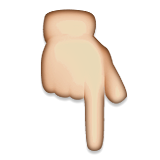
 Thank you for sharing
Thank you for sharing Click to see, good luck continues
Click to see, good luck continues

